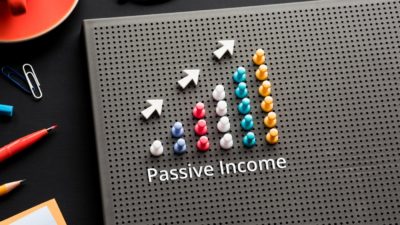High-yield investing — or dividend hunting — is a popular strategy and those following it must feel spoilt for choice right now because so many big, listed companies are sporting huge yields.
But ‘choice’ is the operative word, and I reckon it pays to be careful about which big dividends you select. They are not always good just because they are big, and by pursuing a high-yield strategy, I think investors embrace a lot of risks.
Growth drying up
I’d avoid housebuilder Taylor Wimpey (LSE: TW), for example. The recent share price of 166p throws up a forward-looking dividend yield just under 11% for 2019 including special dividends. Around a third of the payment is classified as an ordinary dividend so the ‘true’ yield is a bit below 4%.
Should you invest £1,000 in Aviva right now?
When investing expert Mark Rogers has a stock tip, it can pay to listen. After all, the flagship Motley Fool Share Advisor newsletter he has run for nearly a decade has provided thousands of paying members with top stock recommendations from the UK and US markets. And right now, Mark thinks there are 6 standout stocks that investors should consider buying. Want to see if Aviva made the list?
However, City analysts predict that forward-looking earnings growth is set to peter out, which will leave the enlarged dividend with thin cover from earnings. I don’t think the special payments will go on forever, but when and if they stop, it’s easy for me to imagine the share price falling so that the ordinary yield rises above, say 5%. That would be a comfortable level for an ex-growth business. And if earnings start to decline, watch out below because I reckon the share price could have a long way to fall.
A fragile business
Royal Bank of Scotland Group (LSE: RBS) is on my ‘avoid’ list too. With the shares at 244p, the forward-looking dividend yield for 2020 is about 6.7%. But the company went many years paying nothing at all and only restarted dividends last year. The business was broken for a long time, and I don’t trust it not to break again when the next decent general economic downturn arrives.
There’s a recent history of erratic earnings and the forward-looking price-to-earnings multiple sits at about eight. That’s all the company is worth, in my view. And it doesn’t take a big stretch to imagine that number being a lot lower.
Back-to-front valuation indicators
Another I’d steer clear of is insurance company Aviva (LSE: AV), which I like to classify as falling into the wider financial sector. With the share price at 411p, the forward-looking dividend yield for 2020 is a massive 9% and the firm trades on a forward-looking earnings multiple of just over six times earnings. I reckon there’s something wrong with that. Normally I’m used to seeing trading companies with a higher figure for the price-to-earnings rating than the one for the dividend yield, not the other way around.
I think the stock market is trying to tell us to be wary of the cyclicality in Aviva’s business. Indeed, the one thing that all three of these firms have in common is they all operate highly cyclical enterprises. I believe that the cyclicals are dangerous when they present with low-looking valuations after a period of high earnings.
Looking for good value by searching out large and growing dividend yields is a decent strategy, but I think it works best if I stick to what Warren Buffett describes as ‘wonderful’ businesses. In other words, firms with strong trading niches, little cyclicality and decent quality metrics, such as a high return on capital and robust profit margins.







